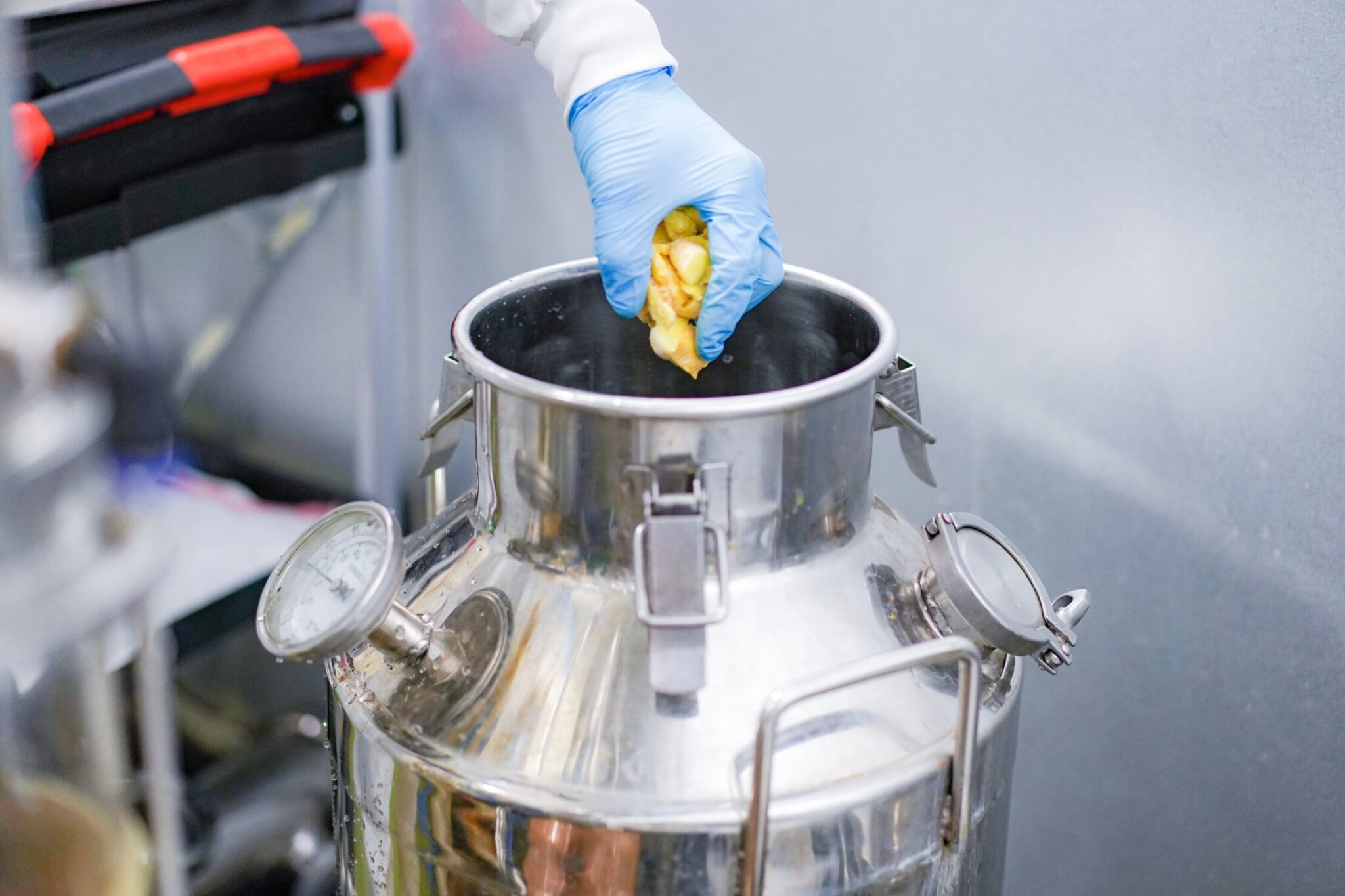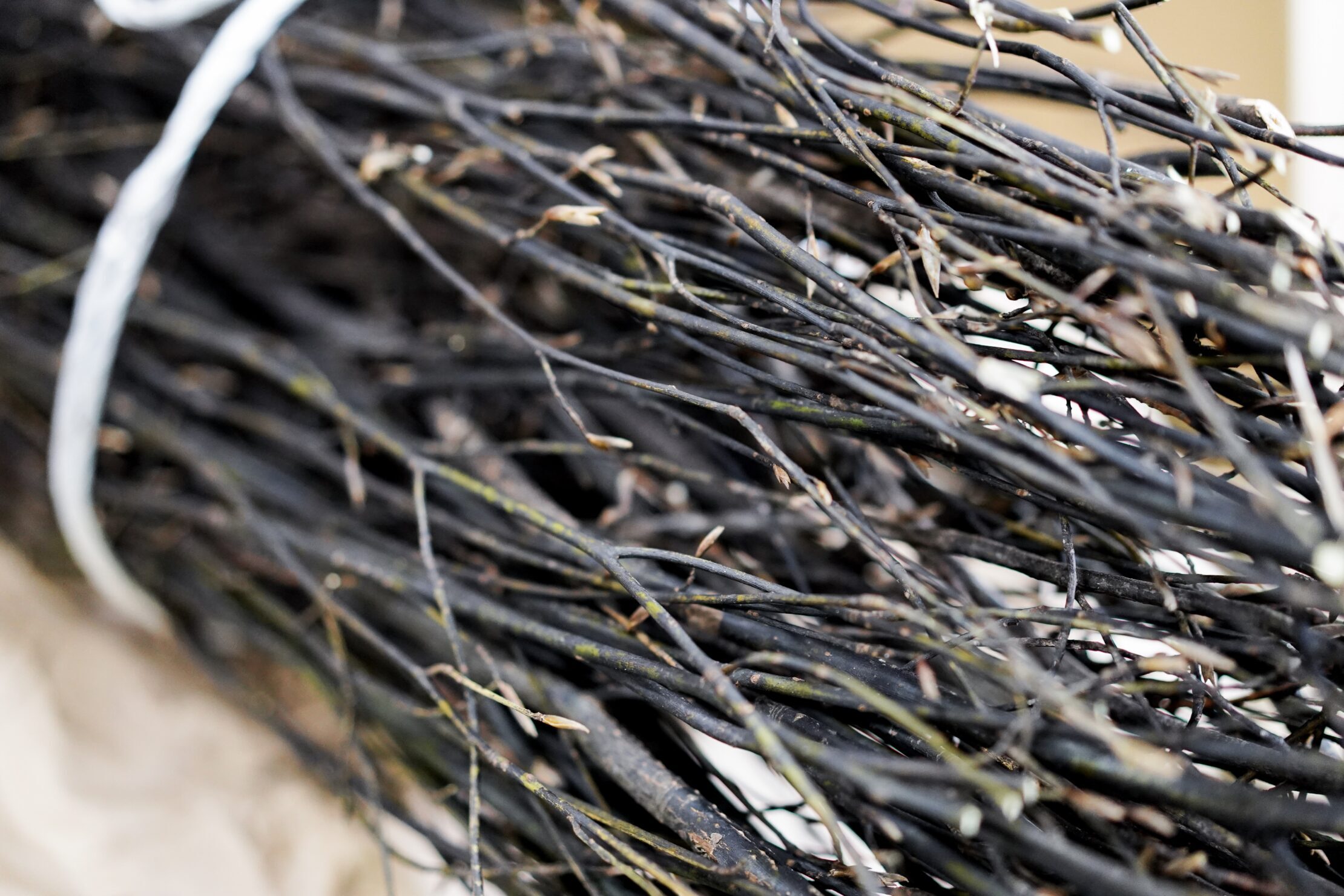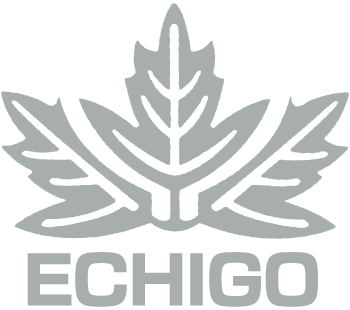Hello, I am Umeda, YASO’s production manager.
I have decided to write a diary and hope you will read it.
Here in Niigata, we are beginning to feel spring with each passing day.
When I walk around the office, I can hear the sound of trees swaying in the spring breeze and birds chirping.
It feels like spring, but my first encounter with key botanicals was at the beginning of winter.
Couldn’t we use the peels of mandarin oranges left over after pressing for something? I had been thinking about it since the end of last year. I thought distilling mandarin oranges sounded interesting, so I decided to give it a try and asked for a sample.
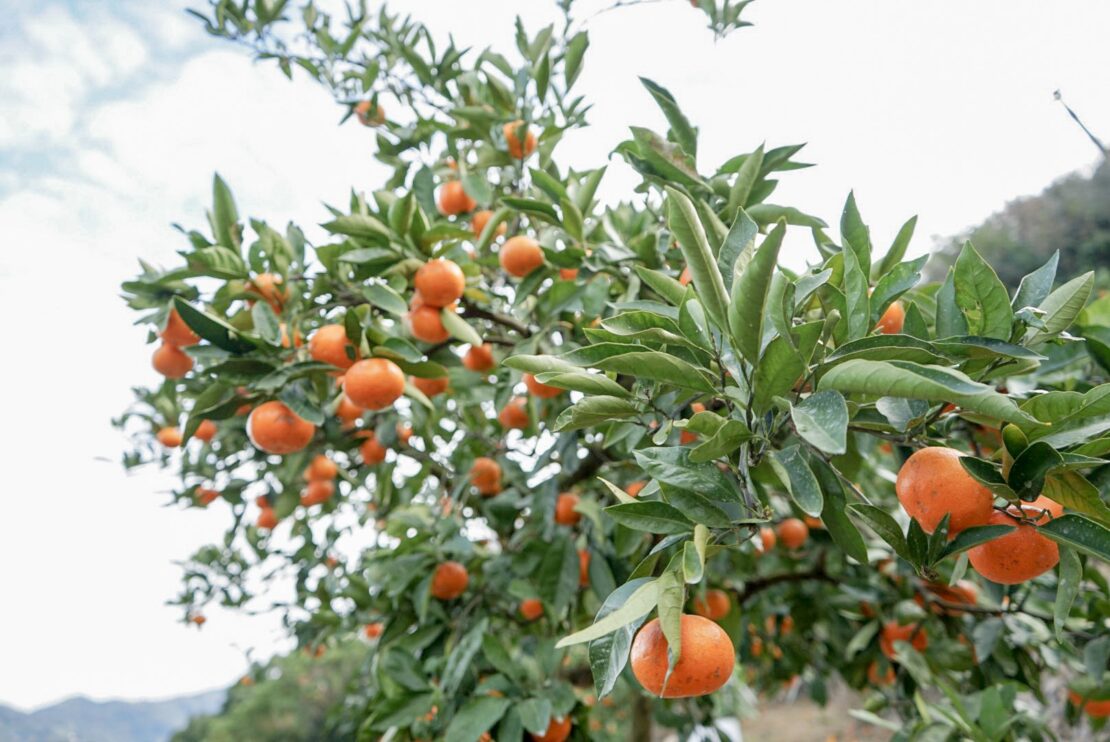
The first mikan we received at the beginning of the year was a variety called Mukaiyama Unshu, produced at Zenbei Farm in Wakayama Prefecture.
According to Mr. Shintaro Inoue, the seventh generation owner of the garden, even the same variety will turn out differently in different environments.
He says that by limiting the cultivation and management to areas with warm temperatures and especially good sunlight near the sea, better taste and aroma can be obtained.
We immediately distill it in a test distiller.
The distilled liquid has a very nice aroma of tangerine peel and a gentle tangerine flavor.
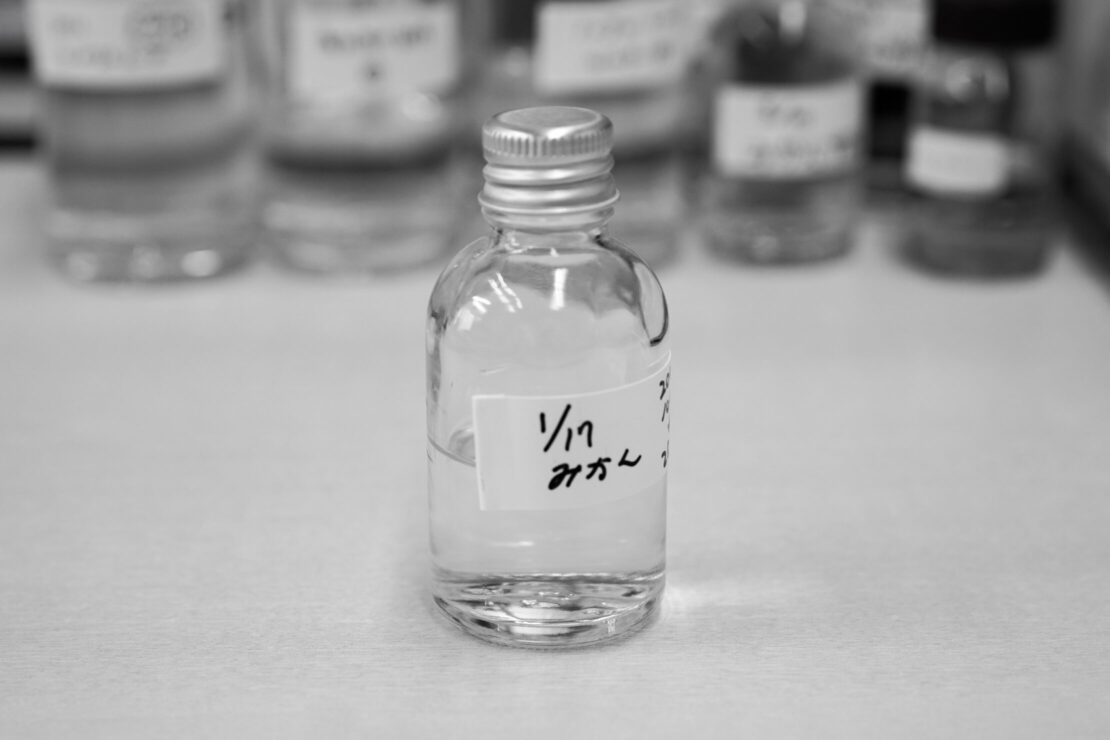
It smelled so good, I bought a certain amount and froze it.
I thought, “When shall I distill this? and all I had to do was to schedule the distillation.
A few days passed, and when I checked the aroma of the prototype distillate, there was no scent of mandarin oranges, but a strange, indescribable aroma.
Months passed and we had the opportunity to distill mandarin orange peels again.
We decided to verify and practice the extraction and distillation methods based on the previous situation.
As for the extraction method, we adjusted the time of immersion of mandarin orange peels in alcohol, and the distilled liquid was covered with the scent of mandarin oranges even after a few days.
As for the distillation method, the distillation of mandarin oranges was done as a stand-alone distillation. Since the aroma of mandarin oranges is most prevalent at the beginning of the distillation process, we actively sought to capture it by distilling the mandarin oranges by themselves.
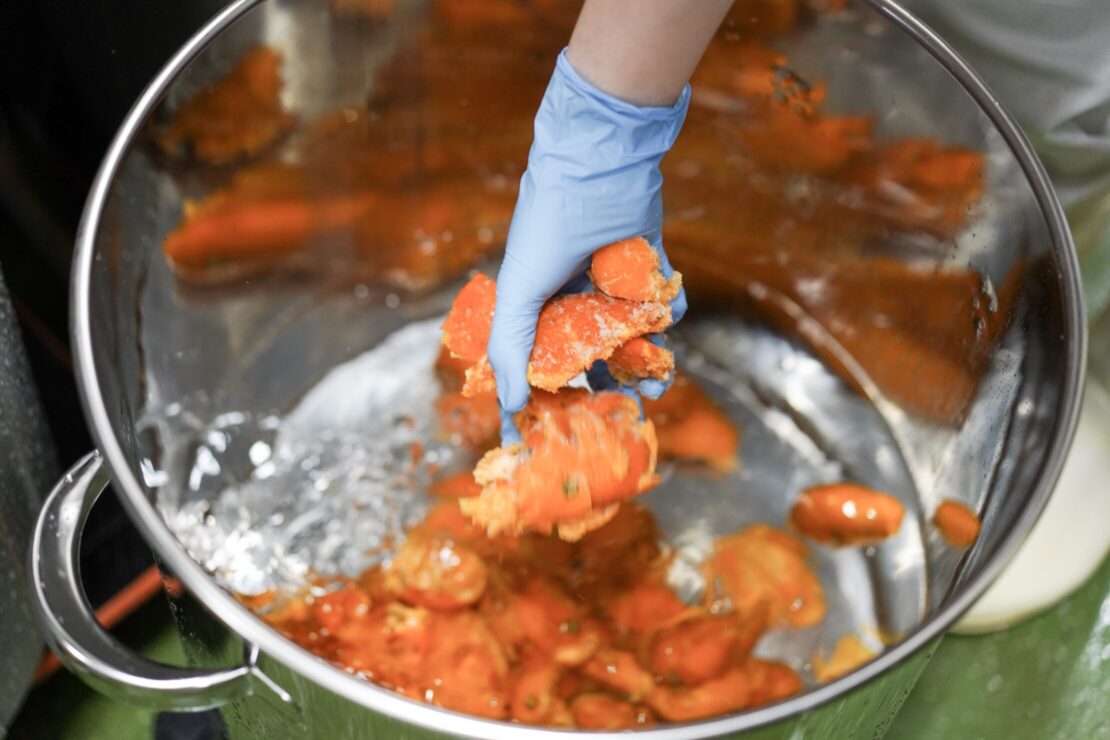
Separately, juniper berries, herbs, and spices are blended to distill the base of the gin, but the filtration process is increased from normal so as not to muddy the mandarin orange aroma.
These distillates are blended and the proportions are explored.
The recipe was completed after a long process of searching for the ideal conditions, since the aroma and taste would completely change depending on the proportions.
From here, distillation based on the recipe goes into production.
Compared to the test run, the distillation equipment will change and the amount of raw materials used will increase, so adjustments will be made while actually distilling.
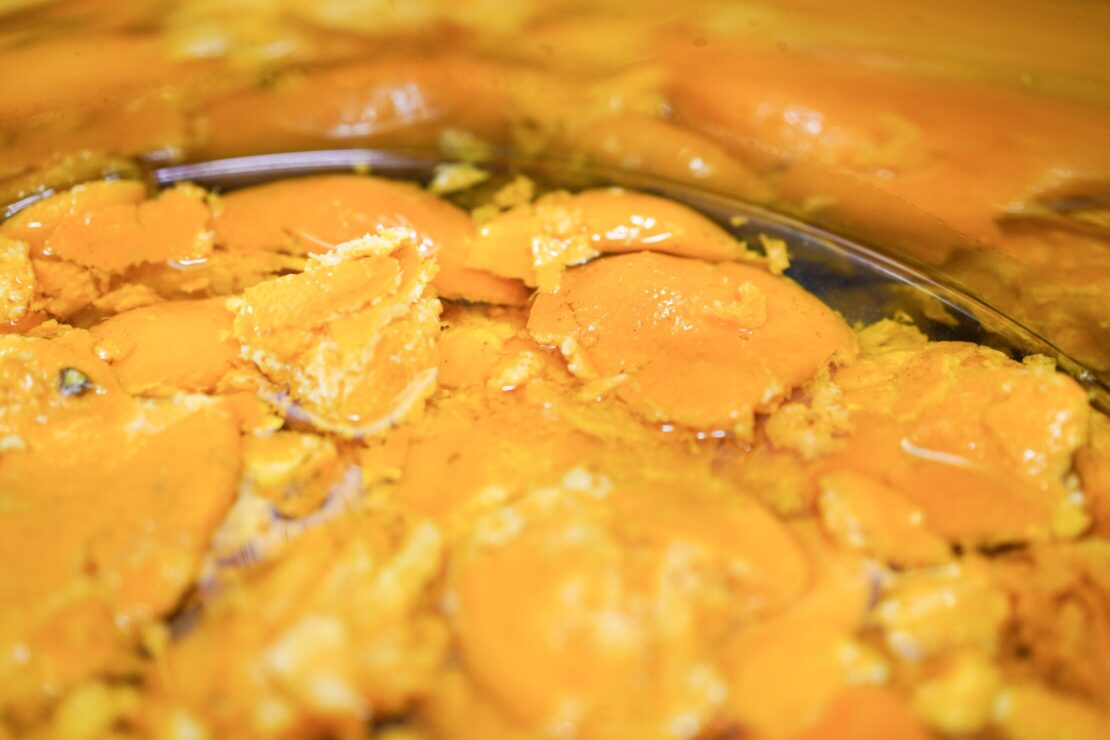
In this case, we distilled the mandarin oranges alone and the gin base several times to several dozen times, so we adjusted the distillation conditions and the amount of raw materials, etc., so that the results of the first distillation were used in the second distillation, the results of the second distillation were used in the third distillation, and so on.
The tangerine aroma is a gentle one, so we had to keep it while bringing out other aromas, so we had a lot of trouble during the distillation process, but that was the fun and interesting part.
I personally recommend a gin and tonic for this gin.
The bitterness of the tangerine peel becomes pleasant with tonic water. I also liked it with water, so please give it a try.
The launch will be on April 15, please.
